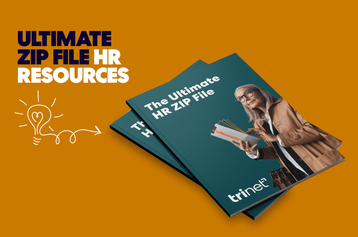
You’ve probably seen all kinds of grants, relief funds, and loans (some of them forgivable) for small businesses — but what exactly is a small business? The frustrating answer is: it depends. It depends on who’s creating the definition, what industry you’re in, the kind of business you own, and a slew of other factors. The most important thing when considering any type of funding or small business relief program is to pinpoint each individual interpretation of “small business.” Let’s take a look at some of the biggest and most popular organizations’ definitions to see if you and your company qualifies.
The most important thing when considering any type of funding or small business relief program is to pinpoint each individual interpretation of “small business.”
Small Business Association (SBA)
The Small Business Association (SBA) has multiple definitions of what is a "small business." The SBA has a number of size standards depending on the industry.
Employee size
Depending on the industry, some businesses are considered small if they have 250 employees, while others have a limit of 1,500 employees.
Revenue
The SBA also defines a small business by annual revenue, ranging from $750,000 to $38.5 million maximum per year. Making 8 figures per year definitely sounds like a lot to many small business owners, but once again, it all comes down to industry. Here’s an overview of the SBA breakdown:
- Agriculture: You’re a small business if you make up to $750,000 in average receipts per year.
- Mining: You can have anywhere from 250 to 1,500 employees, and it all depends on the type of subsector you’re in.
- Utilities: You can have up to 250 employees if you’re in renewable electrical power, but if you’re in natural gas or electric power, it’s only up to 1,000 employees.
- Construction: Small businesses in construction can generate up to a whopping $36.5 million per year.
- Manufacturing: Small businesses in manufacturing can have 500 to 1,500 employees maximum depending on subsectors, but most of these small businesses are capped at 500 employees.
- Retailers: Small business retailers generate no more than $7.5 million in revenue per year. The SBA restricts some subsectors by employee size caps ranging from 100 to 500 employees.
Check specifications for your industry
Really small businesses (those with under 20 employees) actually make up almost 90% of all American businesses.
These are just a few of the examples the SBA has set. If you want to know your employee or revenue caps for your industry, check out the SBA website to learn more. And if you’re thinking that some of these small businesses are actually huge, remember that really small businesses (those with under 20 employees) actually make up almost 90% of all American businesses. Plus, an incredible 23 million small businesses in the country have 0 employees. These are usually sole proprietorships in which the owner is the worker, boss, and everything in between. When determining what a small business is, the SBA will also require the company to be headquartered and operated primarily in the United States.
Affordable Care Act (ACA)
Colloquially known as “Obamacare,” the ACA defines a small business as having fewer than 50 full-time employees. If you have multiple part-time employees, they are combined in this calculation to gauge how many total full-time employees you have — or the equivalent of full-time employees. Two half-time employees equal 1 full-time employee. The ACA further breaks down the definition of small businesses as those with either fewer than 25 full-time workers or those with fewer than 50 full-time workers. If your business has 25 employees or fewer, it might qualify for the ACA Small Business Health Care Tax Credit. How the ACA defines small businesses is important because the legal requirement for an employer to offer group health insurance to employees is only applicable to businesses with more than 50 full-time employees. Small businesses, as defined by the ACA, with fewer than 50 full-time employees do not have to pay or provide health coverage plans to their workers. However, these small businesses can always choose to do so for a variety of reasons, including attracting top talent, boosting morale, and reducing turnover.
Internal Revenue Service (IRS)
According to the IRS, the size of a business is dependent on individual tax laws. The IRS does provide online tools for business owners who qualify to file a Form 1040, Schedules C, E, or F and may apply to businesses that generate under $10 million in revenue each year. A lot goes into defining a business, and the North American Industry Classification System (NAICS) is a popular tool for federal statistical agencies and the SBA to help classify businesses. Although the NAICS was designed to help collect and disseminate data for the business economy, it might help you see how your business (and industry) compares to others. When it comes to business size, there’s no singular definition. The best thing you can do is to keep an eye out for programs that might benefit your business and work with experts to determine eligibility when necessary.
This communication is for informational purposes only; it is not legal, tax or accounting advice; and is not an offer to sell, buy or procure insurance.
This post may contain hyperlinks to websites operated by parties other than TriNet. Such hyperlinks are provided for reference only. TriNet does not control such web sites and is not responsible for their content. Inclusion of such hyperlinks on TriNet.com does not necessarily imply any endorsement of the material on such websites or association with their operators.






